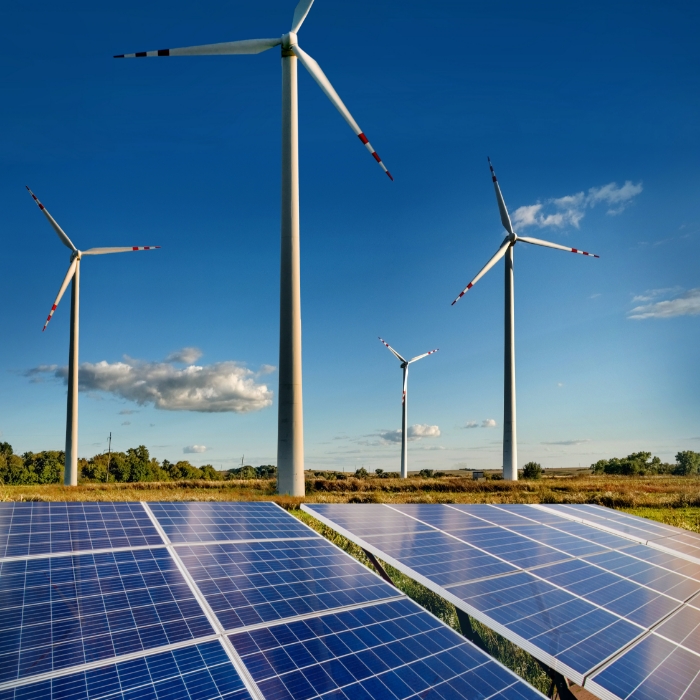An overview of the technology behind our energy solutions.
Renewable technology refers to the use of energy sources that are naturally replenished and have a minimal impact on the environment.
Solar Power:
Solar power harnesses energy from the sun using photovoltaic (PV) cells or solar thermal systems. PV cells convert sunlight directly into electricity, while solar thermal systems use sunlight to heat water or air. Solar power is the most widely adopted renewable technology globally and has seen significant growth in recent years.
Wind Power:
Wind power utilises the kinetic energy of the wind to generate electricity through wind turbines. These turbines consist of large blades that rotate when the wind blows, driving a generator to produce electricity. Wind power is a mature technology and is one of the fastest-growing renewable energy sources worldwide.
Hydropower:
Hydropower generates electricity by harnessing the energy of flowing or falling water. This is achieved through the use of dams or river turbines. Hydropower is a reliable and mature renewable technology, accounting for a significant portion of global electricity generation.
Biomass Energy:
Biomass energy is derived from organic matter such as agricultural waste, wood pellets, or dedicated energy crops. It can be used for heat generation, electricity production, or biofuel production. Biomass energy is considered carbon-neutral as the carbon emitted during combustion is offset by the carbon absorbed during the growth of the biomass feedstock.
Geothermal Energy:
Geothermal energy utilises the heat stored within the Earth’s crust to generate electricity or provide heating and cooling. This is achieved by tapping into geothermal reservoirs through wells and using the steam or hot water to drive turbines. Geothermal energy is a reliable and constant source of renewable power.
Tidal Energy:
Tidal energy is generated by harnessing the natural rise and fall of tides to generate electricity. This can be achieved through various technologies such as tidal barrages, tidal turbines, or tidal lagoons. Tidal energy is still in the early stages of development and has limited commercial deployment.
These renewable technologies offer numerous environmental benefits, including reduced greenhouse gas emissions, improved air quality, and decreased reliance on fossil fuels. Continued advancements in technology and increased deployment are making renewables an increasingly viable and cost-effective solution for meeting global energy demands while mitigating climate change.

HOME TEAM MISSION
We are dedicated to making savings to your pocket as well as our planet.
Cost Savings
Cost saving energy solutions that benefits the environment as well as your pocket.
Environmental Impact
Making our homes more eco-friendly really helps reduce our ecological footprint.